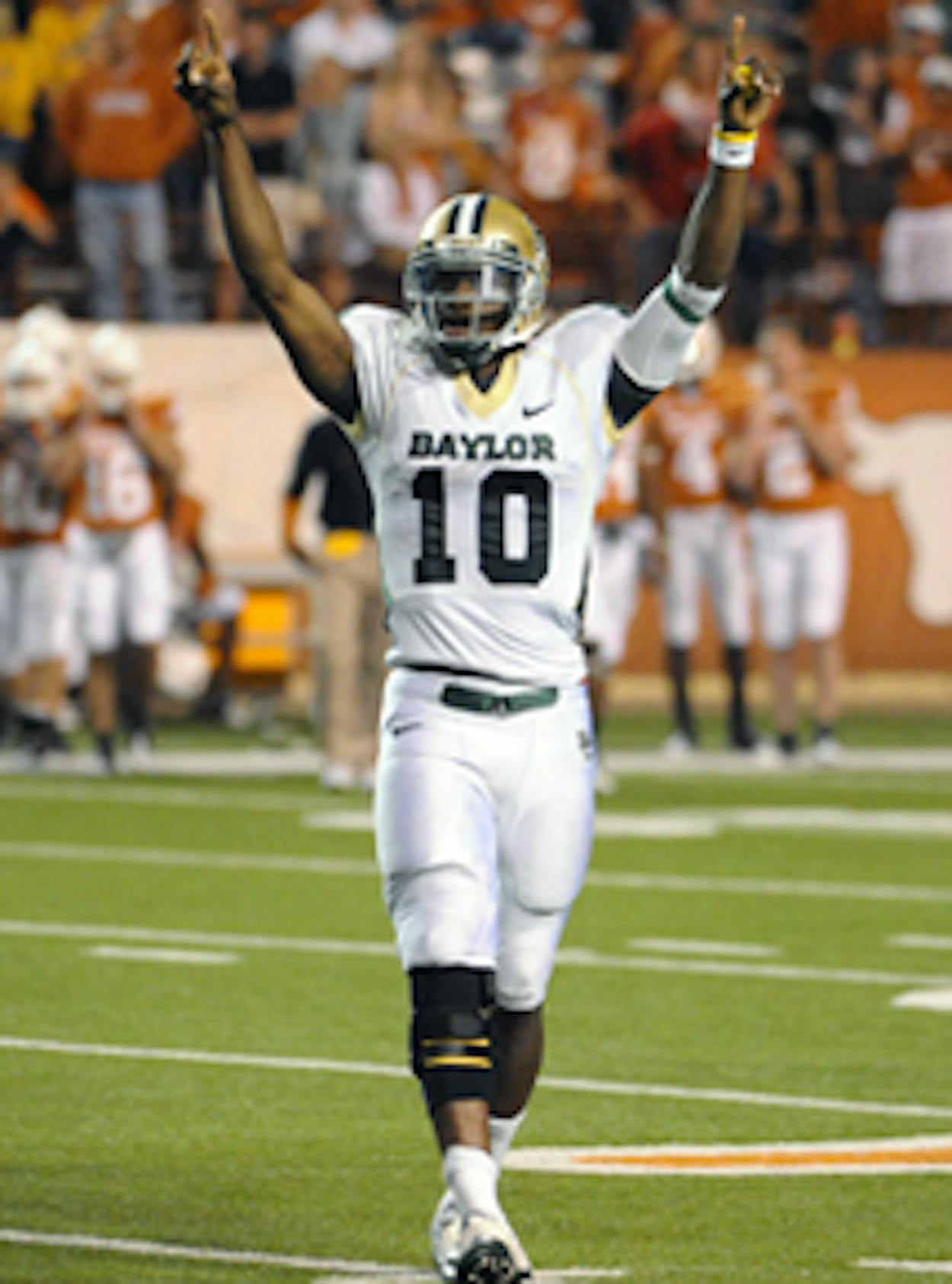In the span of two months, Baylor University quarterback Robert Griffin III—or, as he is known, RG3—has done the unthinkable. He has beaten Texas and Oklahoma; he has led the perennially miserable Baylor Bears to their best season since 1986; he has won the Heisman (the first time ever for the school); and, befitting his status as a media darling, he has cracked a Kim Kardashian joke on the Late Show with David Letterman.
With his deep, arcing passes and ability to create off-schedule plays with his feet, Griffin seems like a once-in-a-lifetime college quarterback. Yet his rise also confirms that Texas is in the midst of a historic quarterback boom. In the last decade and a half, Texas high school football has produced some of the nation’s best passers, and this rising tide of gridiron talent has lifted many boats. How else to explain the fact that the rise of RG3 happened at Baylor?
Glance at the other players in Griffin’s 2008 Texas high school class, and you’ll see evidence of this phenomenon. The 17th-ranked player in that year’s Lone Star Recruiting rankings was Andrew Luck, from Stratford High School in Houston. Now a senior at Stanford, Luck was the Heisman Trophy runner-up (a spot he also claimed last year) and is likely to be the top pick in April’s NFL Draft. The 46th-ranked player was Darron Thomas, from Aldine Senior High School. Thomas went on to lead the University of Oregon to last season’s national championship game.
In that company, Griffin, the state’s 50th-ranked player, wasn’t even a particularly hot commodity. “An elite-level track athlete that still has a long ways to go as a player on the football field,” read Lone Star Recruiting’s write-up. It called the future Heisman winner a “big project with a ton of upside.”
The Texas quarterback boom tends to make even players with Griffin’s skill set look human. After all, Drew Brees (from Westlake) was a 2010 Super Bowl MVP for the New Orleans Saints. Colt McCoy (Tuscola), Andy Dalton (Katy), Kevin Kolb (Stephenville), Christian Ponder (Colleyville), and Matthew Stafford (Highland Park) are all starting in the NFL. Vince Young (Houston) started a handful of games this year when Michael Vick was injured. And you can find Stephen McGee (Burnet) and Ryan Mallett (Texarkana) waiting patiently on NFL benches.
At the college level, Jarrett Lee (Brenham) is the backup (and occasionally the starter) at LSU, which just completed one of the most dominant regular seasons in the history of college football. And Case Keenum (Abilene) carved up the NCAA yardage record at the University of Houston this year. If not for a final-game loss, he probably would have joined Luck and Griffin at the Heisman ceremony.
How did this quarterback boom happen? You can trace its origins in the rise of RG3, who attended Copperas Cove High School in Central Texas, where Coach Hal Mumme (later the head coach at the University of Kentucky) began experimenting with versions of the spread formation. The spread puts offensive players from sideline to sideline, as opposed to more run-oriented schemes that cluster them at the center of the field. When it works, the spread overloads a defense and gives a quarterback lanes to throw and run.
Over the past decade, the spread has conquered Texas high school football, transforming a state defined by running backs like Eric Dickerson and Earl Campbell into one defined by quarterbacks like Brees and Young. At the same time, Texas has seen a marked rise in summer football leagues that play a game known as 7-on-7. In a 7-on-7 tournament, there are no offensive and defensive lines, and the focus is almost entirely on passing.
Texas quarterbacks like Griffin now enter college having taken dramatically more snaps than ever before. It’s like they’ve completed an Advanced Placement course in out patterns.
As a Copperas Cove Bulldawg, Griffin learned to throw deep and race through gaps on long runs—exactly what he needed to do to succeed in the spread at Baylor. By the time he arrived on campus in 2008, he was declaring, “The skills I have and will build definitely give me the advantage compared to any other quarterback they bring in.”
A byproduct of the Texas quarterback boom is that the state’s perennial losers wind up with excellent quarterbacks. Andy Dalton found his way to TCU and helped turn the Horned Frogs into Rose Bowl champions. Griffin committed to the University of Houston, then moved to Baylor with Coach Art Briles, who has become a kind of Jedi of the new world of Texas football.
When Briles was coach of the Stephenville Yellow Jackets, he ran the spread offense, and his proximity to the high school game—he only left to coach college in 2000—makes him a sharp judge of which players can make the jump. (He also recruited Keenum.)
Combine a player like RG3 with a coach like Briles and you have the makings of a new Texas football landscape, an unpredictable place where a Heisman winner can pop up anywhere. Today, it’s Waco. Heck, tomorrow it might even be Austin or College Station.







